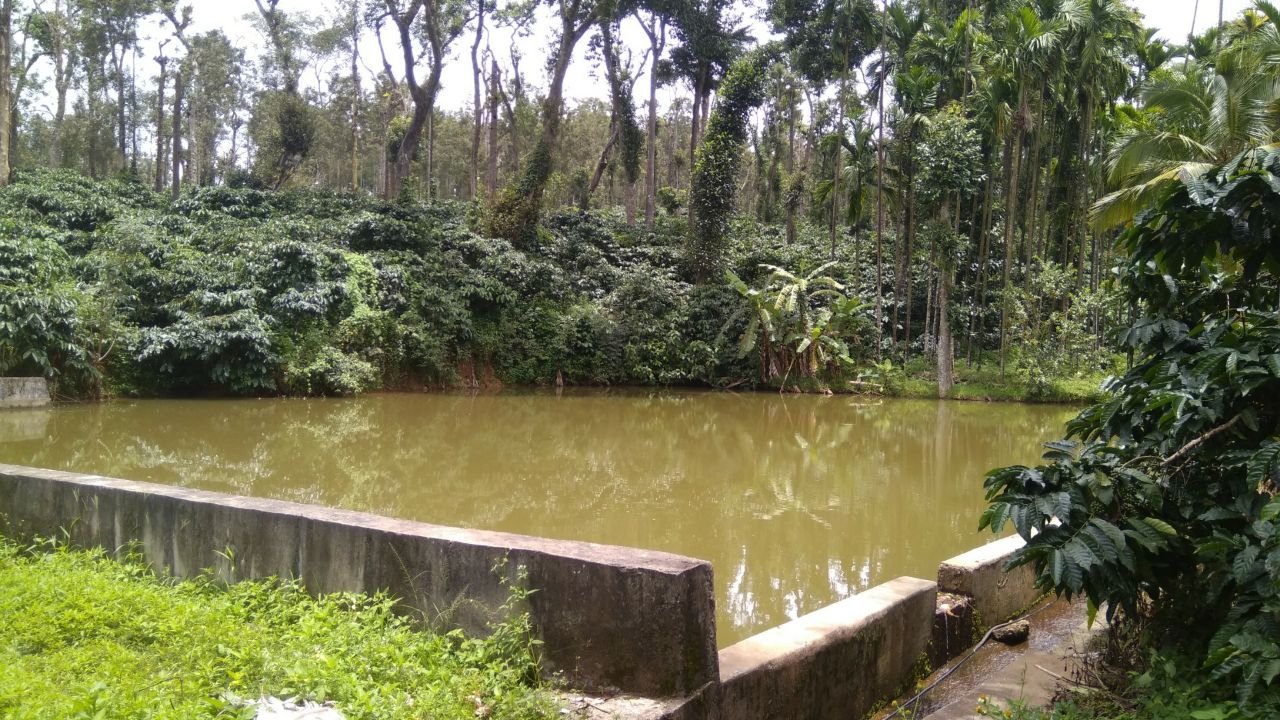Importance of TWO TIER SHADE in Coffee Plantation
Coffee tracts in India receive both South-West and North-East monsoon rains from June to December.
TheN-E monsoon rains are received generally during October to December. In some years the N-E monsoon tapers off by the end off October it self leading to extension of dry period in these areas. Hence, in India coffee areas encounter 4-6 months of dry spell in a year.
Therefore, the coffee plants experience fluctuating weather conditions like continuous wet condition, hail stone,heavy winds,prolonged drought and dry periods. These conditions forced our coffee farmers to grow coffee under shade.
Shade trees essentially help in preventing large variations in soil temperature and moisture levels. Shade trees reduce the intensity of sun light and temperature,combat drought effects and maintain moisture levels in coffee plant tissues and protects the plants from low temperature.
Shade trees also protect the coffee plants from hail stone damage, high wind velocities and prevents over bearing of the plants.
Adequate shade improves soil fertility by way of returning large amounts of leaf litter to the soil. The fallen tree leaf litter improves the organic matter in the soil thereby increasing the useful micro-organism status in the soil.
A properly maintained shade also helps in limiting the incidence of coffee pest and diseases. Coffee grown under shade is always found to be of superior quality and taste. Shade trees are therefore recommended as a protective measure when environmental conditions can be harsh especially in areas which are prone to high temperature, extended drought, heavy rainfall, high winds and occurrence of hail storm.
In India, two tier shades is necessary for growing coffee especially for Arabica. All trees can provide shade but some are planted with well defined objectives to provide desired shade. Therefore while selecting the shade trees; one should see that the selected tree species should have the following properties:
(i)They should grow fast
(ii)Trees those shed leaves during the rainy season but put forth fresh shoots faster immediately after the rainy season.
(iii)Resistance to speedy winds. They should offer resistance to hail stones.
(iv)Should have deep root system so that they do not compete forapplied nutrients and soil surface moisture
(v)They should not harbour/host pest and diseases affecting coffee
(vi)Select trees which give filtered shade

Arabica coffee requires 50-60% of the filtered shade for maintaining good consistent production. The shade tree branches have to be regulated properly in order to provide desired shade to coffee plants. Shade regulation should be done only when sufficient moisture is present in the ground soil. The permanent shade trees can be regulated every year by lopping the branches at height of 30-40 feet to provide required light and air circulation in the field. In Arabica plantations situated at higher elevations (more than 3700 feet) having two tier shade canopy of dadap (lower) and permanent (upper) shade trees, shade regulations can be done during February or March months.
In irrigated Robusta fields, the shade regulation can be undertaken immediately after the harvest. While in rain fed plantations shade regulation should be done only after the receipt of 4-5 inches of rain.
Dadap lopping should be undertaken immediately after the onset of monsoon and all the stakes should be finely chopped and returned to the field along with the leaf mass.
Labour scarcity is one of the major problems in coffee plantations and availability of skilled workers for shade regulation limited. Therefore, in plantations while choosing the new shade trees, one has to prefer those shade trees which shed leaves during the monsoon but sprouts quickly after the monsoon. Atti and Havalige(Balanji) belong to this category of trees.

Timber extraction in Arabica fields should be done only after establishing the permanent shade trees along with required number of dadap trees well in advance of 2-3 years in the area where removal of shade trees is proposed.
Silver oak trees can be extracted when they reach the age of 30-35 years.
Maintenance of monoculture shade especially silver oak should be strongly discouraged in coffee plantations. The temperature of the soil in such plantations is generally higher than other fields. The incidence of white stem borer, leaf rust andblack rot disease is also more in silver oak shaded plantations.
The popular kinds of shade trees belong to the Ficus family like goni, basree, mitlee and atti. These trees have large spreading braches and deposit large quantity of leaf litter in the soil. Albizzia family (leguminosae) trees like kal bage or hotten bage are also good shade trees. Jack trees are very common in plantations in South India.But the jack fruits should be removed before they mature in order to avoid cattle and
monkey menaces.
Retaining higher levels (thick) shade during the monsoon results in the incidence of black rot and stalk rot diseases in coffee plants and berry drop due to chillness in the soil. When the over head shade is more than desired, vegetative growth of the coffee plants will be higher and in such plants flower bud formation will decrease.
The plots or estates exposed to western aspect should have high shade canopy of 60-70% and also the lower branches of the shade trees should be retained on the border rows. Silver oak or silk cotton trees should be planted closely in zigzag manner as a shield belt for reducing the exposure to evening sun. Do not train pepper vines in all the shade trees. The number of vines can be limited to 100 per hectare in Arabica.




Useful information.. Thanks!